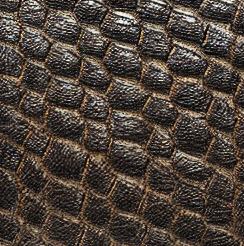Is crocodile leather more expensive than alligator leather?
Crocodiles vs. Alligators: Who Wears the Pricier Leather?
Have you ever wondered what makes luxurious leather goods so expensive? Well, when it comes to fancy purses, wallets, shoes and more, the material that commands the highest prices is leather made from crocodile and alligator skin. These creatures may look alike, but their hides are totally different!
Crocodiles and alligators are part of the crocodilian family, which means they are closely related. But these reptiles have unique scales, textures and colors that make their leather extremely valuable. In the world of high fashion, anything exotic and rare quickly becomes desirable. And nothing says luxury like accessories made from genuine crocodile or alligator leather!
But which reptile wins when it comes to cost? Is crocodile leather more expensive than alligator? Or vice versa? Grab your magnifying glass as we investigate the intriguing case of comparing croc vs gator skin.

Where Do Crocodiles and Alligators Come From?
First, let’s look at where these creatures originate. This can impact availability and price.
Crocodiles mainly come from places like Australia, Southeast Asia and Africa. Some popular species are the Nile, Saltwater and Siamese crocodiles. They live in lakes, rivers and swamps.
Alligators are found in wetlands across the southeastern United States and China. The American Alligator is the most common gator used for leather.
So crocodiles have exotic appeal, coming from far away locales like the Nile River. But alligators feel more familiar since they live right here in America! Let’s call this category a tie for now.
Supply and Demand
Next we need to examine supply and demand. When something is rare, designers want it more! But too much demand can make prices skyrocket.
Harvesting crocodile and alligator skin is extremely complex. First, the creatures must be sustainably farmed or harvested from the wild within strict limits. Then, experts carefully remove the hide and transport it to tanneries for processing. All of this takes time, effort and money.
With designers constantly seeking these skins for luxury items, demand is always high. But limits on hunting and farming make the materials very scarce. Low supply + high demand = huge price tags!
Again, both crocodile and alligator leather seem evenly matched when it comes to availability. Let’s dig deeper!


Differences in Look and Feel
Now we’re getting to the good stuff! What makes each skin unique?
Crocodile leather has a more uniform look. The scales have a neat, repetitive pattern. It’s shinier and has a bumpy texture.
Alligator skin is more irregular. Each scale and section can differ in shapes, sizes and markings. It has a flatter, less shiny appearance.
When it comes to visible features, crocodile seems to stand out. The orderly scales and glossy finish give it a wow factor that alligator skin lacks. But beauty is in the eye of the beholder!
Tanning and Treatment
Preparing crocodile and alligator hides for use is an intricate process. Let’s go behind the scenes!
After harvesting, the skins are cured with salts to prevent decaying. Then they go through tanning which stabilizes the proteins and prevents shedding. Chemicals like chromium give alligator leather its flexibility.
For crocodile skin, tanners use plant-based oils instead of chemicals. This maintains the scales and enhances sheen. Special techniques like drum tumbling even out the surface. Glazing adds a glossy finish.
This extra processing makes crocodile leather more costly. But some may argue the natural methods used for croc skin make it more valuable. We’ll call tanning a draw!
Location, Location, Location
As we learned earlier, crocodiles and alligators come from different habitats. This also means their leather gets made in different places around the world.
American alligators mean alligator leather is mostly produced in Southern U.S. states like Florida and Louisiana. Low shipping costs keep prices reasonable.
For crocodile skin, the raw hides often get transported from Australia or Africa to Asia for tanning. Then the finished leather ships to designers worldwide. More steps and transportation leads to higher costs.
Based on production location, crocodile leather appears pricier. We’re getting closer to a verdict!
Ethics and Regulation
Whenever animals get used for food and materials, ethics and laws come into play. This affects how much of the resource is available.
For American alligators, strict rules protect them from overhunting. Alligator farms must follow regulations on safety, nutrition and humane treatment. Violators face serious fines and jail time!
Many crocodile species are endangered. But regulations aim to balance conservation with sustainable farming. In Australia, ranchers follow ethical practices. Farms in Asia and Africa are working to improve animal welfare.
With all the red tape, obtaining crocodile and alligator skins is an ethical maze! But ultimately, the limited supply keeps prices high. We’ll call this category a tie.

The Verdict: And the Winner Is….
All the evidence has been presented! After comparing origin, supply, visual uniqueness, tanning, location and ethics, we have reached a verdict.
The pricier leather is…crocodile!
While availability is similar, crocodile skin’s exotic source, glossy scales, specialized tanning and global transport make it the champion when it comes to cost. Brands must pay a premium to obtain this rare, luxurious material.
But don’t count alligator leather out! Its rarity and unique beauty still make it very desirable to designers. For leather lovers, owning a bag or shoes made from either of these exceptional skins represents a fashion dream come true!
So next time you visit a luxury store and marvel at the outrageous price tags, remember, creating exclusive, coveted items from crocodile and alligator skin takes immense time, effort and skill. As long as the allure of the reptile reigns supreme, these materials will continue to signify the height of fashion!
